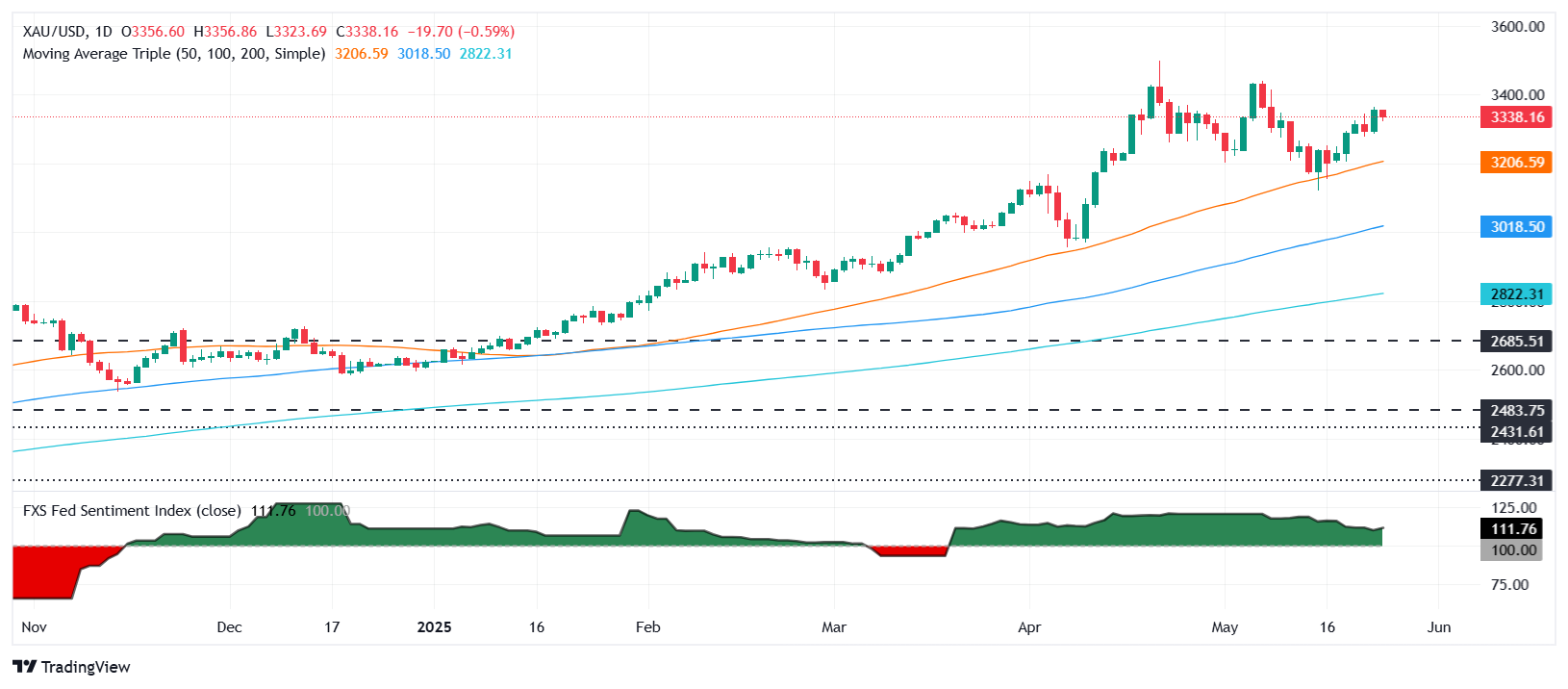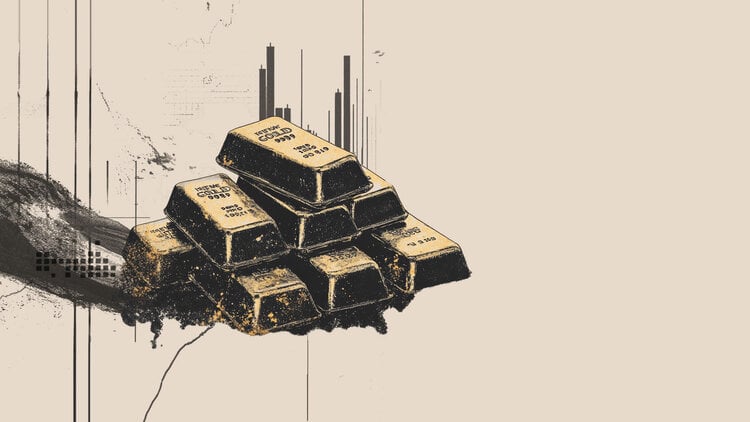- Gold price dips over 0.50% as improved sentiment trims haven flows after last week’s 4.86% surge.
- Trump postpones 50% EU tariffs to July 9, easing short-term trade war fears.
- Strong Chinese Gold imports and Russia-Ukraine tensions keep the bullish outlook intact.
Gold price drops more than 0.50% on Monday amid the lack of demand for haven assets after United States (US) President Donald Trump delayed tariffs on the European Union (EU). In the meantime, trading remains thin due to the closure of the United Kingdom (UK) and US financial markets for holidays. At the time of writing, XAU/USD trades at $3,336.
Market mood improved on Trump’s statement on Sunday, pushing back the enactment of duties on EU products until July 9. Therefore, Bullion is pressured following last week’s gains of over 4.86%, the most significant increase since the week starting on April 7.
On Friday, XAU/USD extended its bullish move as Trump continued to pressure Apple (AAPL) to make iPhones in the US. If not, 25% of duties would be imposed. At the same time, he escalated the rhetoric against the EU, threatening to impose 50% tariffs on its goods. This drove the golden metal from $3,287 to last week’s highest high of $3,365.
Despite retreating, Gold prices are set to continue rallying, as Reuters revealed that “China’s net gold imports via Hong Kong more than doubled in April from March, and were the highest since March 2024, data showed.”
Additionally, geopolitical risks remain high after Russia attacked Ukraine for the third straight night, spurring an angry reaction on Trump.
This week, the US economic docket will feature April Durable Goods Orders, the Federal Open Market Committee (FOMC) meeting minutes, the second estimate for Q1 2025 Gross Domestic Product (GDP) and the release of the Core Personal Consumption Expenditures (PCE) Price Index, the Fed’s favorite inflation gauge.
Gold daily market movers: Improvement in risk appetite weighs on Gold prices
- US Treasury bond yields remain steady. The 10-year Treasury note yield fell two basis points (bps) on Friday to 4.509%. Meanwhile, US real yields were down as well, one 4 bps to 2.179%.
- Gold price outlook is optimistic, given the fragile market mood toward US assets sparked by the growing fiscal deficit in the United States, which ignited Moody’s downgrade of US government debt from AAA to AA1.
- The fiscal package approved by the US lower house is projected to raise the debt ceiling by $4 trillion.
- The US Dollar Index (DXY), which tracks the buck’s value against a basket of six currencies, edged down 0.10% at 99.00, a tailwind for the Dollar-denominated precious metal.
- Money markets suggest that traders are pricing in 47.5 basis points of easing toward the end of the year, according to Prime Market Terminal data.

Source: Prime Market Terminal
XAU/USD technical outlook: Gold’s uptrend to extend to $3,400
Gold prices retreated slightly, and it seems traders are booking profits amid thin liquidity and low volatility in the US in observance of the holiday. Trump’s inconsistency regarding trade policies could keep prices swinging violently once trading resumes on Tuesday.
From a technical perspective, Gold’s bull trend remains intact. If buyers achieve a daily close above $3,300, they could test last week’s high of $3,365. If surpassed, the next stop would be the $3,400 figure, followed by the May 7 high at $3,438 and the all-time high (ATH) at $3,500.
On the bearish side, if Gold drops below $3,300, expect a move to the May 20 daily low of $3,204, ahead of the 50-day Simple Moving Average (SMA) at $3,199.

Fed FAQs
Monetary policy in the US is shaped by the Federal Reserve (Fed). The Fed has two mandates: to achieve price stability and foster full employment. Its primary tool to achieve these goals is by adjusting interest rates.
When prices are rising too quickly and inflation is above the Fed’s 2% target, it raises interest rates, increasing borrowing costs throughout the economy. This results in a stronger US Dollar (USD) as it makes the US a more attractive place for international investors to park their money.
When inflation falls below 2% or the Unemployment Rate is too high, the Fed may lower interest rates to encourage borrowing, which weighs on the Greenback.
The Federal Reserve (Fed) holds eight policy meetings a year, where the Federal Open Market Committee (FOMC) assesses economic conditions and makes monetary policy decisions.
The FOMC is attended by twelve Fed officials – the seven members of the Board of Governors, the president of the Federal Reserve Bank of New York, and four of the remaining eleven regional Reserve Bank presidents, who serve one-year terms on a rotating basis.
In extreme situations, the Federal Reserve may resort to a policy named Quantitative Easing (QE). QE is the process by which the Fed substantially increases the flow of credit in a stuck financial system.
It is a non-standard policy measure used during crises or when inflation is extremely low. It was the Fed’s weapon of choice during the Great Financial Crisis in 2008. It involves the Fed printing more Dollars and using them to buy high grade bonds from financial institutions. QE usually weakens the US Dollar.
Quantitative tightening (QT) is the reverse process of QE, whereby the Federal Reserve stops buying bonds from financial institutions and does not reinvest the principal from the bonds it holds maturing, to purchase new bonds. It is usually positive for the value of the US Dollar.





